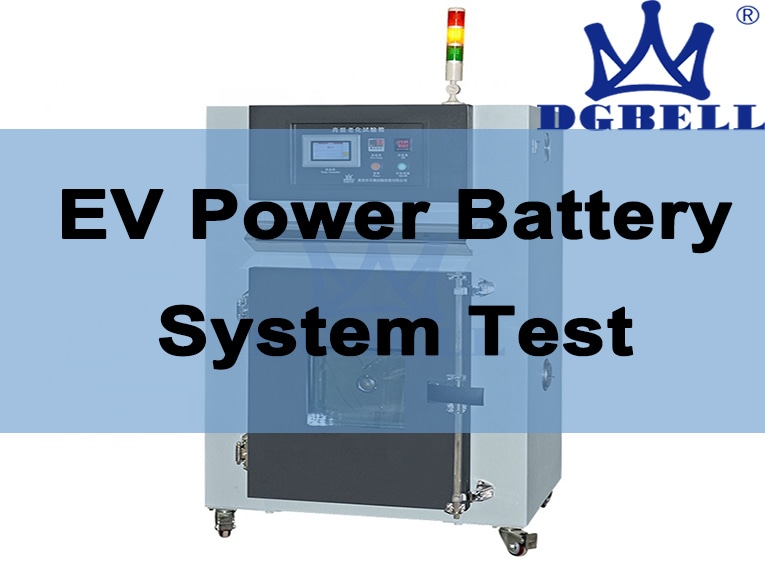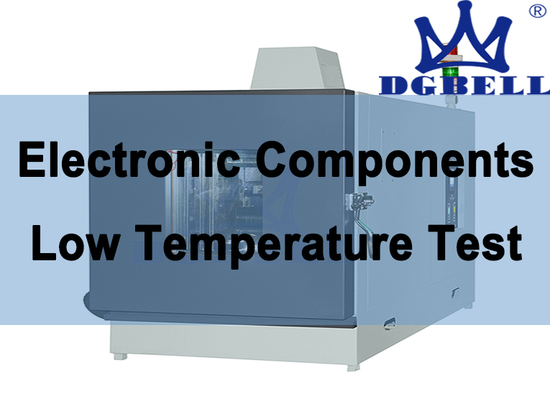
#Industry News
EV Power Battery System Test Knowledge – Part 2
EV Power Battery System Test Knowledge – Part 2
3 External fault issues
3.1 Analysis of Sensor Fault Problems
The battery management system needs to have functions such as voltage balancing and overcurrent protection, which are mainly achieved through reliable temperature, voltage, and current sensors. Usually, sensor failures are not taken seriously, which can have very serious consequences. There are several main types of sensor faults in power batteries: voltage sensor faults, current sensor faults, and temperature sensor faults.
Current sensor faults can reduce the accuracy of multi-state estimation, and SOC and temperature measurement data can be applied to real-time update of battery model parameters to achieve high-precision prediction. Lithium ion batteries need to operate within a safe voltage and temperature range, as exceeding a reasonable range can affect battery performance and cause accidents. Voltage and temperature sensors can also cause balancing errors and thermal management failures in battery management systems.
3.2 Analysis of cooling system faults
The heat dissipation step mainly relies on the battery structure and the thermal performance of the cooling system. The battery pack is intake through the intake pipe, then cooled by a fan, and finally the hot air is discharged. The cooling system in the power battery malfunctions, provided that the external environmental temperature value of the battery is high or there is a lot of internal heat release, making it difficult for the battery system to stay within a reasonable temperature range.
The internal heat release of the battery system is higher than the heat dissipation. The individual battery will gradually heat up and reach the critical temperature value in a short period of time. Based on this temperature background, the exothermic reaction will gradually form a chain reaction, causing the battery thermal runaway, causing problems such as fire, gas release, and explosion. If there is a short circuit problem in the battery, the heat dissipation value will increase linearly, and the generated heat will also show exponential growth, causing a large amount of heat accumulation during the process, and the incidence of battery system accidents will also increase.
At present, the main cooling methods for battery packs include gas cooling, liquid cooling, and phase change material cooling, ensuring that the battery pack is within the optimal temperature range and its performance will be optimized, playing an important role
3.3 Battery connection failure issues
This type of fault is mainly caused by poor connection between battery terminals. The connection of individual batteries or battery modules inside the battery pack needs to be completed through nuts or welding, which increases the running time of the vehicle and the operating conditions are not certain.
The connecting parts are highly likely to be affected by impurities and corrosion due to loose vibration surfaces. There is a virtual connection problem between batteries, which reduces the output power of the battery, and then rapidly increases the resistance value, generating a large amount of Joule heat. The temperature value between the battery and the connectors increases, and if this type of fault is not detected and resolved in a timely manner, it will accelerate the aging of the power battery, generate more faults, and cause frequent safety accidents.
4 Fault diagnosis measures
4.1 Internal fault diagnosis measures
Knowledge diagnosis measures started early and have been widely applied. This type of approach does not require the use of complex mathematical models, and highlights knowledge-based concepts and processing methods to carry out fault inference and judgment. The main types of knowledge battery fault diagnosis include expert system method, fault diagnosis tree, etc.
The expert system method has a large number of studies and is widely used. The key to this method is to design a system knowledge base and inference engine, and judge the results through a more comprehensive and effective knowledge database inference. Based on fuzzy mathematics and fuzzy diagnosis principles, a fuzzy expert system model for battery packs is constructed using expert system application rules.
Based on the common faults of battery packs, and based on the experience of battery fault diagnosis experts and the maintenance experience of battery field experts, a knowledge base about objects and relational databases is formed, and an artificial intelligence fuzzy inference comprehensive judgment inference machine model is set up. Model fault diagnosis method: This diagnosis method uses battery related models to obtain estimated values and actual measured values. The difference between the two will form a system residual, which can become a fault knowledge signal. Through this signal, further fault feature analysis can be completed, providing theoretical data support for system fault diagnosis. The system residual is on an idealized basis, which only includes fault information data. There are many types of power battery models, such as electrochemical models, circuit models, etc
4.2 Analysis of external fault diagnosis measures
Firstly, knowledge diagnosis measures are taken. In the diagnosis of external battery faults, fault tree analysis, threshold rule method, and fuzzy theory are mainly used. The main reasons for battery sensor failure are high-temperature aging, mechanical oscillation, etc. By utilizing the DC internal resistance of the battery at the loose position of the connecting bolt, compared to other single cell batteries, the internal resistance theory is higher. By using the pressure difference threshold rule, it is possible to quickly detect poor connection problems such as loose battery pole bolts and oxidation of the connecting parts.
With the help of a battery pack, 1C current can be used for continuous discharge. After a fixed duration, the voltage change value can be obtained, and the reliability of the battery pack connection can be diagnosed by comparing the set value with the measured value. By using fuzzy theory to diagnose virtual connection faults and using power battery system fault simulation to construct membership functions for different symptoms, the diagnosis weight matrix and other model parameters can be optimized, and a fault diagnosis model can be set.
Secondly, there are model fault diagnosis measures, which include many methods and are mainly applied in sensor and cooling system fault detection and isolation. By using the nonlinear parity check equation, voltage, current, and fan residual values are generated in the first-order equivalent circuit model and thermal model. By using residual thresholds, voltage sensor faults and current sensor faults can be identified. Diagnose fault problems such as speed sensors and current sensors using observer estimates and actual value differences. Summarize the hazards caused by various faults, and use structural analysis and sequential residual generation methods to detect and separate faults. This method can obtain sensor detectability and separability even under the premise of uncertain system design parameters, and construct targeted diagnostic testing fault online detection methods. By using equivalent circuit models and thermal models, current, voltage, and temperature birth residuals can be estimated, and faults in current and temperature sensors can be detected and isolated.
5 Conclusion
At present, people’s environmental awareness is constantly strengthening, and the promotion and application scope of new energy vehicles is gradually expanding. The country has achieved strong support for new energy vehicles, and in the future, new energy vehicles will occupy a larger proportion of the automotive production market. In new energy vehicles, batteries play a crucial role, and their performance directly affects the effectiveness of the vehicle. By analyzing battery failure issues and proposing fault diagnosis measures, important assistance is provided for future battery production, diagnosis of battery failures, and maintenance of power pack battery operation.






